Hornby R3860 Class 8P Merchant Navy 4-6-2 35012 'United States Lines' BR Lined Malachite Green Steam Locomotive


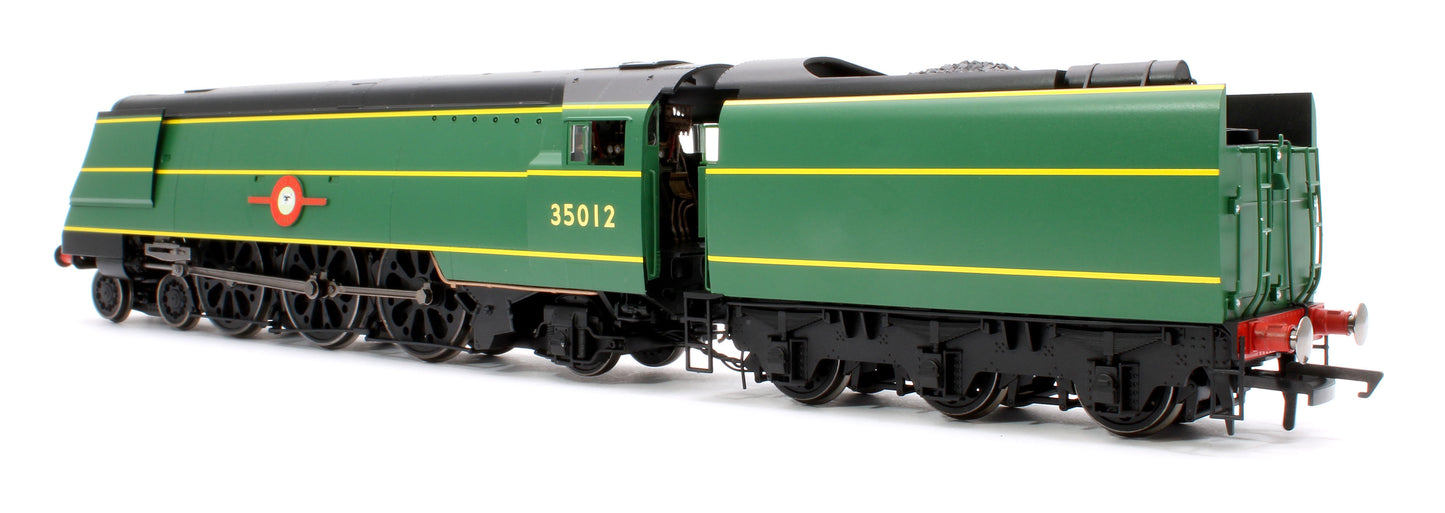
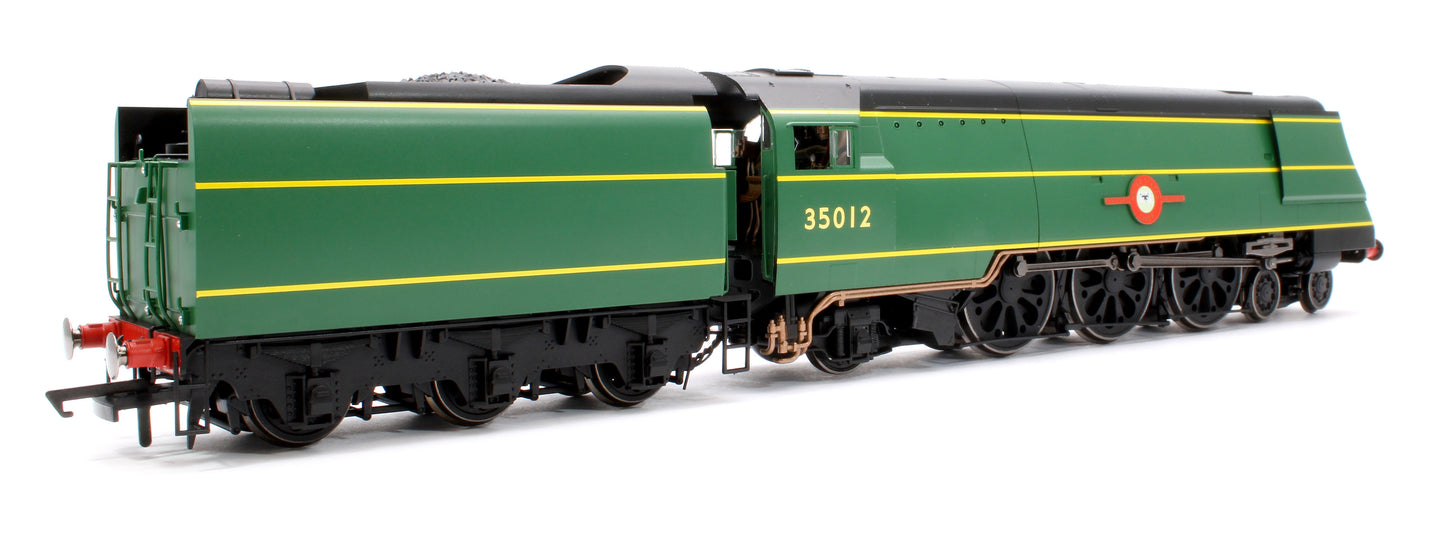

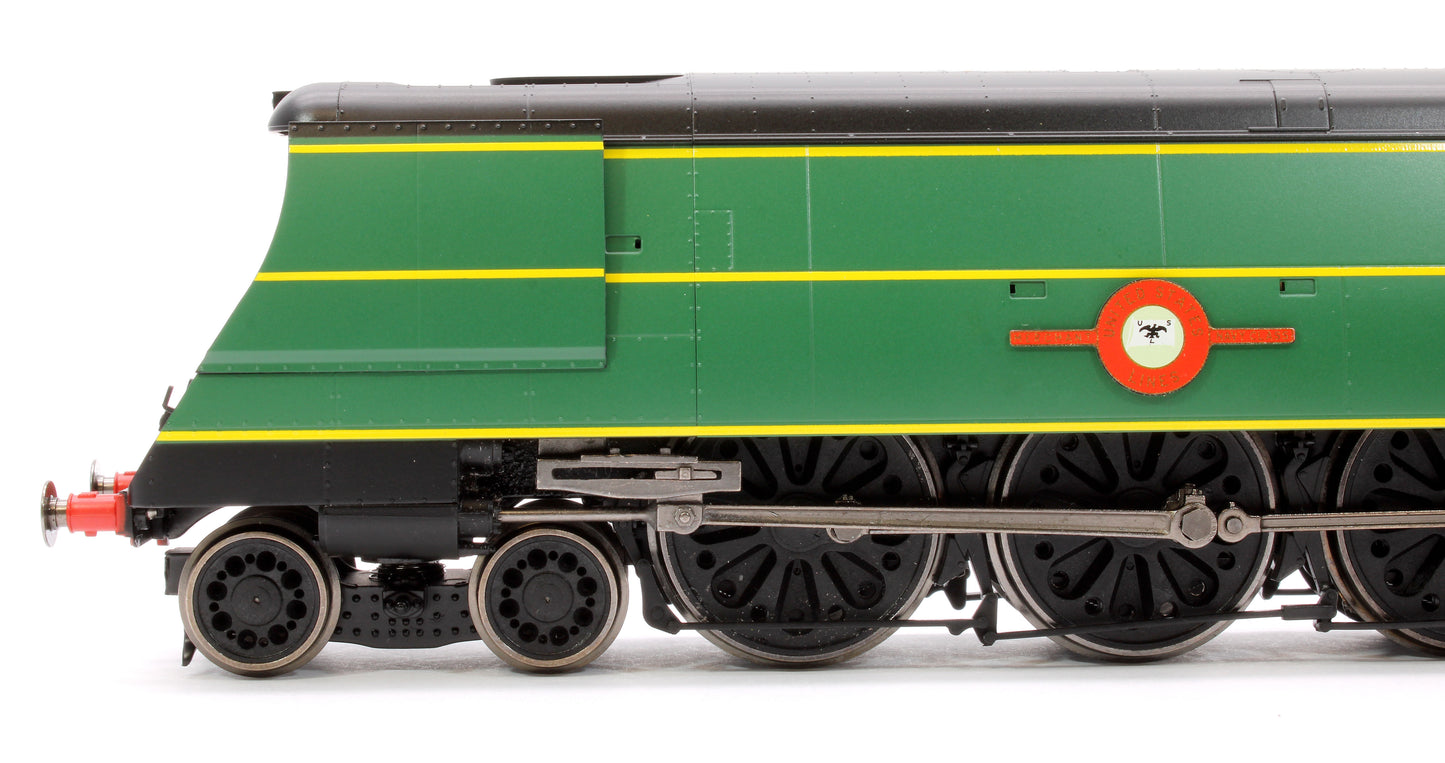
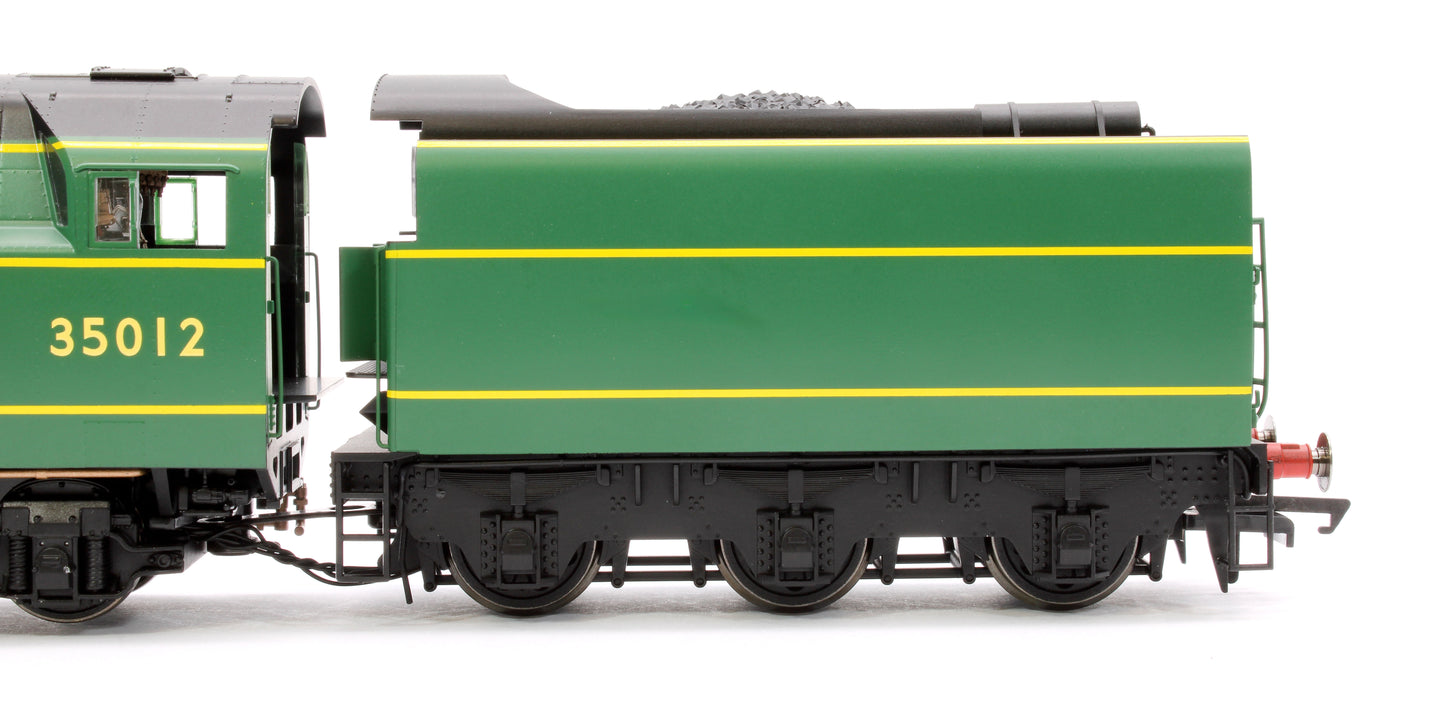
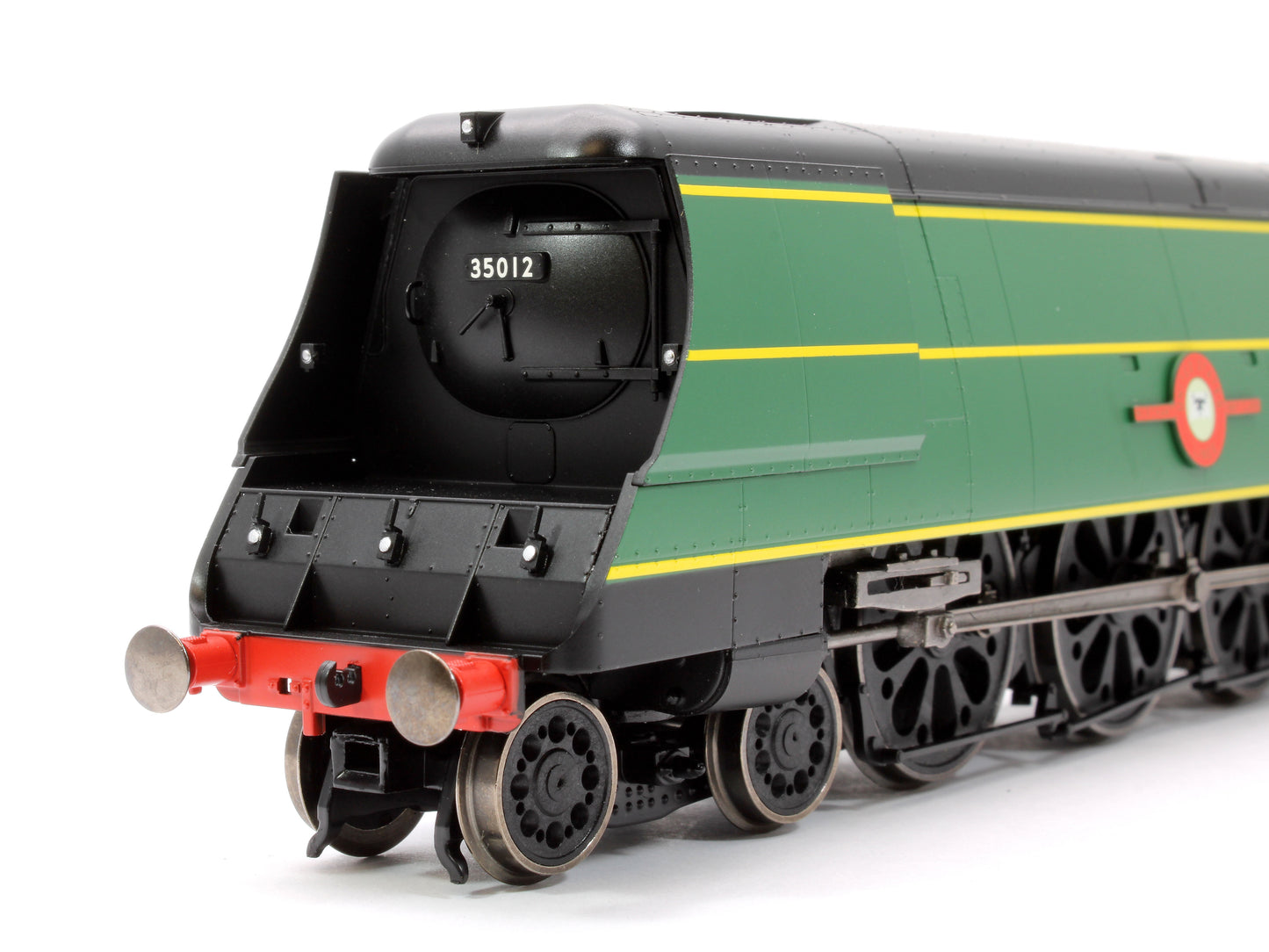

Product Details
| SKU | HOR-R3860 |
|---|---|
| Vendor | Hornby |
| Categories | Best selling products Era 3 HO-OO Hornby In stock Items Latest Releases Locomotives NEW Hornby Arrivals New products OO Gauge Latest Releases OO Gauge Locomotives OO Gauge scale OO Gauge Steam Locomotives Product Options Steam Locomotives |
| Scale | OO Gauge |
| Share | |
| Features |
|
Product Description
Conceived in 1937 when Oliver Bulleid became Chief Mechanical Engineer of the Southern Railway, the Merchant Navy Class represented Bulleid's vision for a quick accelerating, mixed traffic 4-6-2 locomotive, equally capable of hauling passenger services (such as the Golden Arrow and Atlantic Coast Expresses), or freight workings, to a speed of around 75mph.
Mainly designed from the Brighton Works Drawing Office, under C.S Cocks, Bulleid, always aware of the practical applications and costing implications ensured that the best design practices of the time were applied to the new locomotive. Like his mentor, Nigel Gresley, Bulleid was a technically arrogant CME, an advocate for locomotives being driven hard and to brisk schedules and this materialised in his design ideas.
In 1934, Bullied had been opposed to the use of streamlining but for the Merchant Navy's 'air-smoothed' design is suited his purposes, being easy to clean mechanically and hiding the boiler's external pipes, which in turn meant that they could be run for function, rather than aesthetics. Opting for a welded steel firebox, instead of traditional copper construction for reduced weight and pressure benefits, Bulleid was able to make the three equally sized cylinders smaller, at 18', and better balanced.
New X-ray inspection techniques were specifically developed to monitor wear to the welded areas, whilst the newly designed Bulleid Firth Brown 6" 2' driving wheels reduced the amount of hammer blow to the rails, also resulting in less wear. Of all the new features Bulleid incorporated into the design, perhaps the most ingenious and, ultimately, most controversial was his decision to totally enclose the valve motion in an oil bath to prevent attritional wear through grit ingress.
Despite the onset of war in 1939, Bullied's design was accepted by the wartime Railway Executive Committee and production commenced though November 1940 at Eastleigh Works. The first member of the class, Channel Packet, was introduced in June of 1941 as the rather complicatedly numbered 21C1. Only 20 locomotives would be built under the SR, with a further 10 being built by BR entering straight into their service between 1948 and 1949. The last of the locomotives would be withdrawn towards the end of steam on BR in July of 1967.
Locomotive 35012 entered service with the Southern Railway in January 1945 with the palindromic locomotive 'number' 21C12. It would gain its more conventional number under BR before being rebuilt by the nationalised operator in February 1957, making it one of the first examples to be rebuilt. The locomotive would go on to serve under BR, mainly on the former Southern region before being withdrawn in April 1967. United States Lines would be scrapped in Newport shortly after.
The Hornby Merchant Navy is fitted with a powerful five pole motor and a large flywheel providing excellent performance. The locomotive if fitted with a fully detailed cab, tender pickups, NEM pockets front and rear and a 8 pin decoder socket.
- Item Length - 29.1, Width - 3.5cm, Height - 5cm
- 1:76 Scale 00 Gauge
- Painted Finish
- DCC Status: DCC Ready 8 pin socket
- Minimum Curve (mm): Radius 2
- Motor: 5 Pole Skew wound
- Number of Parts: 1
- Buffer Type: Sprung Metal Buffers
- Coupling Type: NEM Tension Lock








